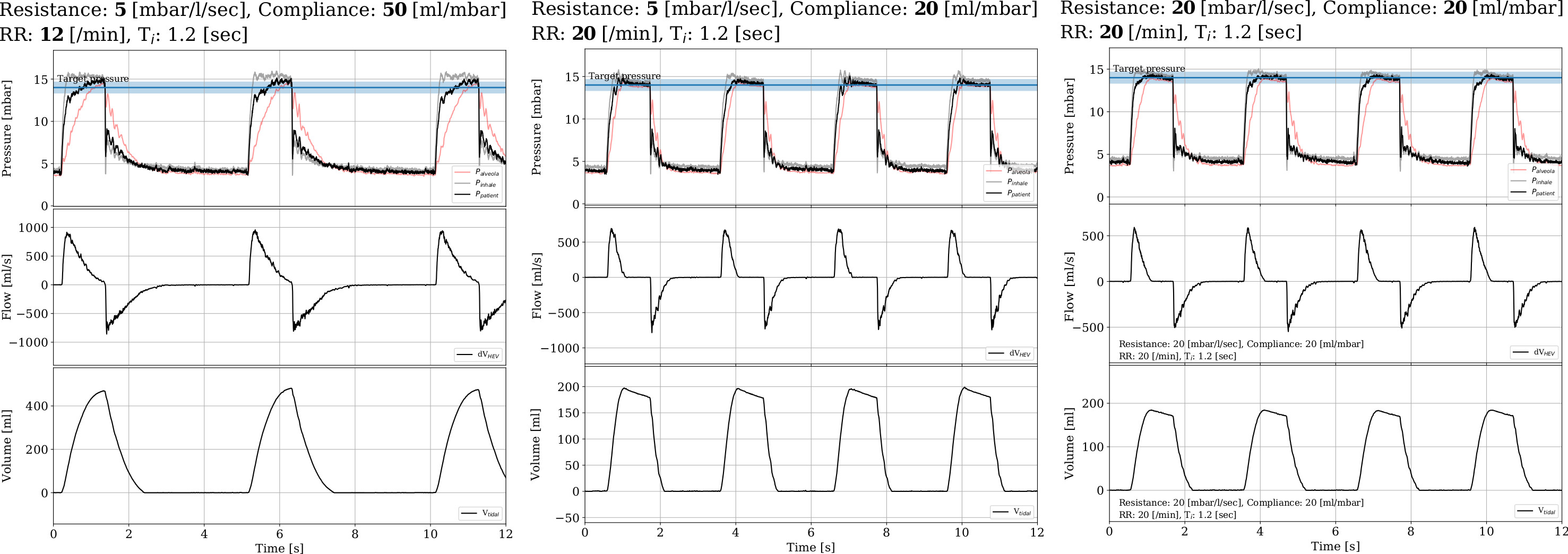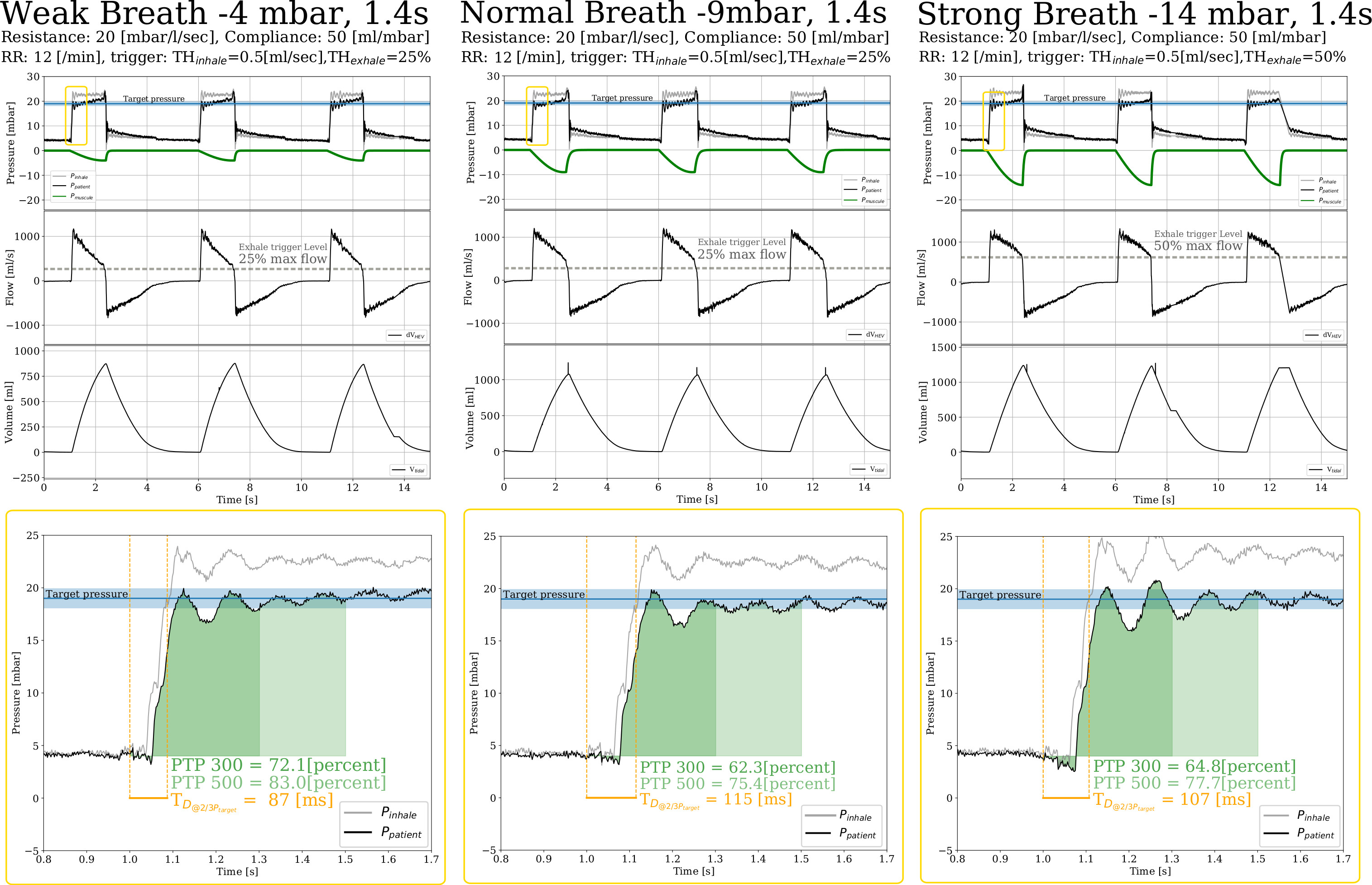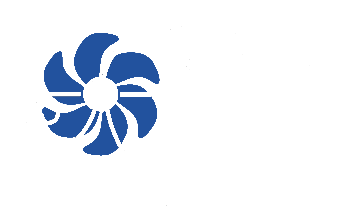Some example curves are shown here.
We show first the performance in Pressure Control Mode. In this mode the start of breath can be triggered by machine or by the patient and the end of the inspiration is controlled by the ventilator, using parameters entered by the clinician. The breathing curves are shown for three different patients, highlighting high and low lung compliance and high and low resistance. For each patient the pressure is shown as measured inside the ventilator, at the patient airway, and inside the patient lung, the air flow is shown, and the volume of air entering the lung. For each patient the target pressure is rapidly attained and the flow and volume show the expected shapes. The variations in the shapes of the curves in the patient lungs are the consequence of the different resistance and compliance. The quality of the patient treatment, especially for sedated modes, depends on a sharp and precise pressure rise, exactly as provided by HEV.

The second image shows the performance in Pressure Support Mode. In this mode the inspiration is triggered by the patient and the expiration is patient cycled; the expiration is triggered when the flow drops to a fraction of the peak value, where this fraction is defined by the clinician. Three different sets of curves are shown, in the case where the patient is breathing with a weak, normal, or strong effort. It can be seen that the ventilator responds to the patient demand, keeping very good synchronicity. For each patient a more detailed view is shown of the start of inspiration. For optimum patient comfort it is important that the ventilator has a rapid response to the patient effort, followed by a sharp and precise pressure rise. It can be seen that the HEV reacts in less than 100 ms, meaning that the patient will feel imperceptible delay. The quality of the pressure response is quantified by the “PT300” number, which integrates the pressure rise over the first 300 ms, and which is displayed here, together with the “PT500" number for experts. Here HEV also shows excellent performance.

These images show that the aim of HEV, to provide a high quality performance, optimising patient comfort, can be well satisfied by the functional design.
